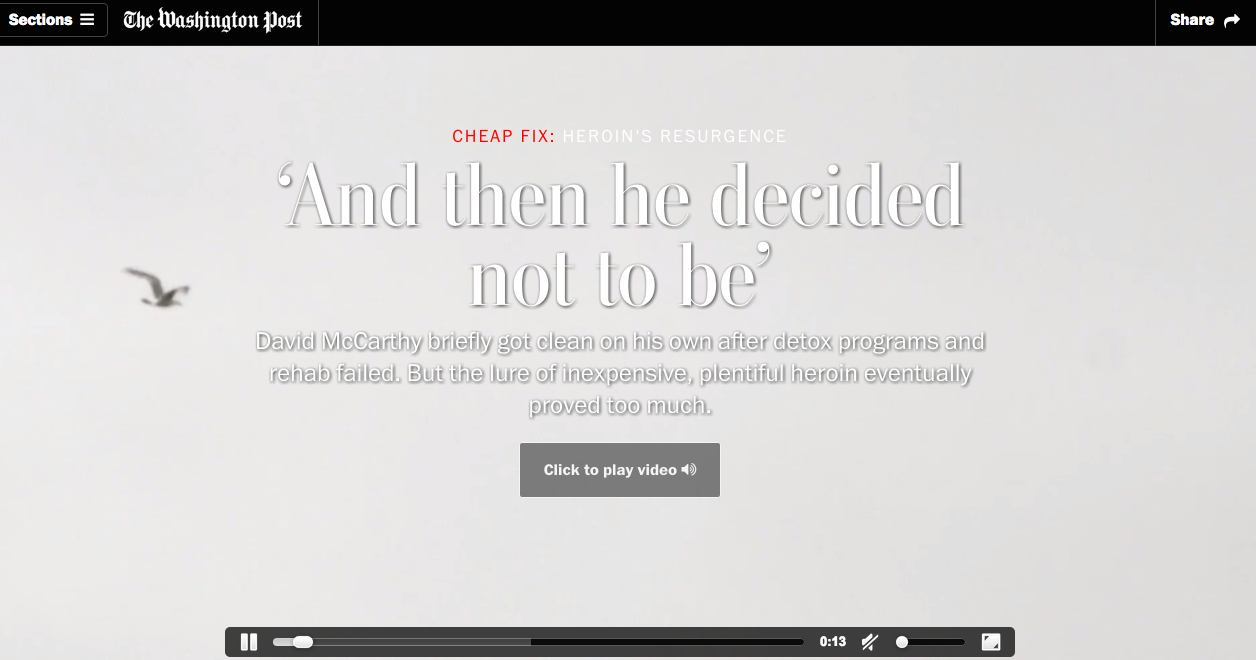
Settling on a sustainable strategy for online video has been notoriously difficult for publishers. Efforts to produce live video shows have mostly sputtered.
The Washington Post is now betting on “the right stories for the right platform at the right time,” according to its video director Micah Gelman, hired by The Post in April. (He was previously director of digital video strategy and operations at Discovery).
The Post’s PostTV launched in 2013 with lofty promises to be the “ESPN of politics,” but it lost steam and eventually became a repository for wire content and press briefing footage. Its new efforts, rebranded as Washington Post Video, will extend its investment in video, customizing content for various different platforms and turning away from some longform shows in favor of pointed, shorter clips. It’s making a big hiring push for new video editors — including some to work with Post “franchises” like Wonkblog and The Fix — and plans to integrate video reporters and editors into the Post’s many section teams when the paper moves offices at the end of the year.“The rest of the Post site has become a much more approachable way to get the news,” Gelman told me. “Whether it’s through Morning Mix or Wonkblog or The Fix, it’s been aggregating smartly and offering a bit of perspective — not a bias, but a perspective, a little bit of that inherent Internet attitude.”
In the past, though, the video team had been “more constrained.”
“They felt locked up by the conventions of traditional television storytelling, with a traditional evening newscast style presentation,” Gelman added. “But we don’t have to be TV. We dropped TV from our name. We don’t have to be constrained by those conventions, and we aren’t opposed to experimenting.”
The “appointment viewing” days of PostTV, Gelman says, are over. The success of a video often depends on the context in which viewers are watching it. The Post intends to keep tweaking content to best fit different platforms — whether it’s the same type of content told slightly differently, or creating slightly different versions of a video —working in coordination with its audience development team.
“Facebook is a big opportunity. We continue to see YouTube as a good opportunity. We have Washington Post iPad and Kindle apps. We have a Roku app and a Fire TV app, and we know that viewing behavior on all of those platforms is different,” Gelman said. “The Facebook experience is, for instance, heavily focused on autoplay, so some of the content that we create takes advantage of that.” (There’s no Apple TV app yet, but it’s coming.)
The Post’s video content is about 60 percent original and 40 percent aggregated content, though Gelman said that, with the new hires, he expects the team will be able to produce “a lot more original content.” They’ll continue to work with wire partners and other sources like Storyful. The lion’s share of the Post’s video views come from a video embedded in an article page, and Gelman’s team will continue to create video tailored to a “text home,” rather than “orphan videos that aren’t going to get a lot of love.”
He pointed to a video done for a story in The Post’s series on the rise of heroin, in which the video was embedded right at the top of the story.
Still, some article ideas have originated as ideas for video — during the Post’s coverage of the tenth anniversary of Hurricane Katrina, for example. When the video team physically moves into the newsroom, video reporters and editors “will be there for the beginning of all story conversations.”
The Post is also looking into more nascent technologies like virtual reality and 360-degree video, which it has already experimented with internally. According to Gelman, 360 video will be a “really critical piece of our campaign coverage.” As an example, he suggests that with a full 360 video, viewers can experience what it’s really like to be on the campaign trail by seeing not just the candidates but what the candidates themselves are seeing.
“We’re working on finding the right stories to make this work,” he added. “We don’t want to make it a gimmick.”